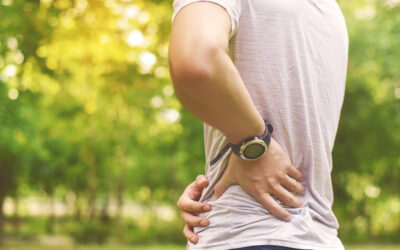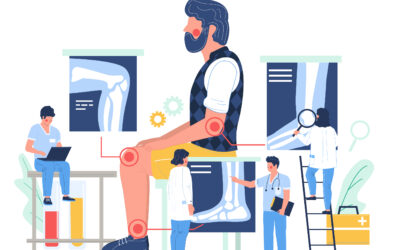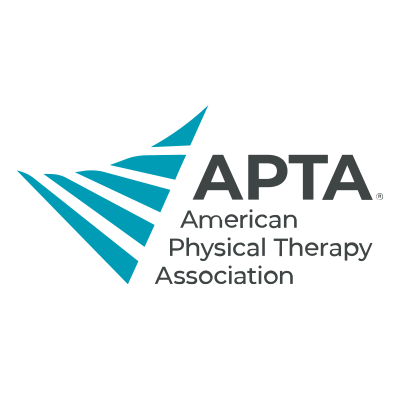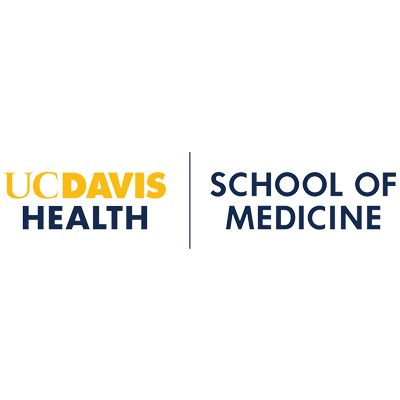Impaired flexibility is rarely a significant issue for the healthy population under 35 years of age. However, it is a nearly universal byproduct of aging and can inhibit athletic performance at all ages. Impaired flexibility contributes to musculoskeletal discomfort by altering the distribution of movement forces throughout the body, escalating stresses to muscles, joints and tendons. It inhibits physical performance through increasing energy use during movement and preventing optimal body mechanics during activities. Impaired flexibility also decreases response time to position changes or external stimuli, which increases fall risk. While flexibility is not the only factor in maintaining your body’s ability to function, it is a critical one. Once you understand the source of reduced flexibility, you can work to restore it without expensive or invasive medical treatment.
Understanding Reduced Flexibility
Despite what some may think, reduced flexibility is not due to the shortening of our bodies’ fibrous tissues. Through recent advances in ultrasound and CT scan imaging we now understand that reduced flexibility is not the result of shortening connective tissues, but loss of gliding between the fibrous tissues. The loss of gliding ability occurs when the lubricating substance between your fibrous tissues thickens and becomes sticky, reducing your overall mobility. Fibrous tissue thickening and stickiness, and your resulting limited flexibility, may occur due to:
- Lack of use
- Overuse
- Chronic inflammation
- Emotional stress and sustained muscle tension
- Poor general health
- Poor lifestyle choices
- Aging
Reduced tissue gliding encourages fibrous “crosslinks” to develop between fibers, creating substantial resistance to your tissue’s ability to glide. You will recognize this as having a lack of flexibility. Your body initially redistributes movement stresses to compensate for reduced tissue gliding. This altered force distribution accelerates tissue wear and tear, increasing inflammation and early degenerative changes in muscles, tendons, and joints. Additionally, thickening of regional tissues results in altered circulation and degradation of your nervous system functions. It can also contribute to heightened pain responses.
The combination of restricted circulation, degradation of the nervous system, and muscular response disrupts quality of life, functional capacity, and longevity—essentially making people old before their time. However, increasing your fibrous tissue’s gliding ability, and in turn your body’s flexibility, can prevent this premature aging.
Increasing Your Flexibility
Combating the loss of gliding between tissues is simple.
Practice healthy habits.
The lubricant between fibrous tissues degrades from lack of movement, overuse resulting in tissue damage, or an acidic environment in our bodies. Acidic environments result from local inflammation or general inflammation. Inflammation occurs due to tissue damage, emotional stress, poor diet or sleep habits, and health degrading substance use. By practicing healthy habits, such as eating well and getting enough sleep, you can help your body reduce inflammation and acidic environments for your fibrous tissues.
Exercise.
Repeated mid-range gliding movements, such with modest exercise, preserves the ability of the tissues to glide past one another. Repeated gliding movement can also stimulate the rapid and healthy turnover of the lubricant. Excessive exercise creates lactic acid that is responsible for the breakdown of the lubricant and the stiffness experienced 24 to 48 hours following. A healthy body recovers from this stiffness in a few days, exercise only temporarily degrades the lubricant.
Use heat.
Just like the oil in your car, fibrous tissue lubricant is at its best when it is warm. This is why we can feel so stiff upon first rising from bed or a long car ride to only loosen within a few minutes of movement. External means, such as a heating pad or spa, or movement and exercise, can warm the lubricant. This is why it is always helpful to come early to therapy or massage appointments and warm up in our gym prior to a one-on-one appointment with a therapist.
Stay hydrated.
Our bodies burn through about eight cups of water even on a light use day. Heavy physical activity will obviously burn more. Dehydration can reduce both physical and mental performance. Eating plenty of plants in your diet can fulfill most of your fluid needs, but ensuring adequate hydration through drinking several glasses of water a day is a great idea and easy to do.
Perform manipulation of the soft tissues and specific tissue gliding exercises.
Soft tissue manipulation (massage) and tissue gliding exercises are very effective in restoring or enhancing flexibility. Teasing the layers of connective tissues apart manually followed by repeated tissue gliding exercise is the key to restoring or enhancing flexibility. Cupping can also tease apart superficial layers. Once you interplay between the layers of tissues, lengthening and broadening exercises intended to restore full and optimal range becomes much more productive.
How FPT Can Help
We are starting a massage/bodywork and flexibility exercise service to address this critical aspect of health. By training therapists in this specialized style of manual work, we can offer this service for a fraction of the cost of a therapy session. Participation is appropriate for anyone who is not currently experiencing a significant musculoskeletal problem. Our Health and Performance Massage program can help enhance your health, prevent musculoskeletal issues from arising, or improve your physical performance. For more information, visit the Health and Performance Massage program page.










